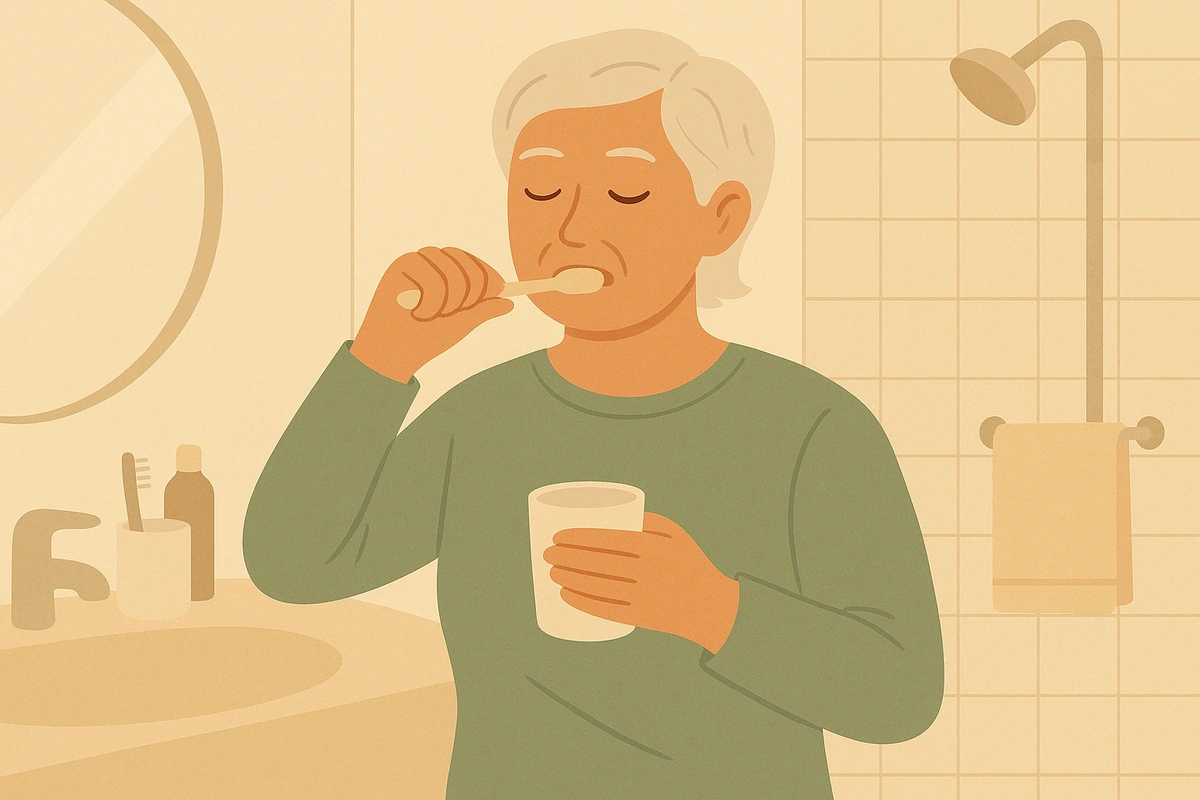Mindful brushing or showering transforms everyday hygiene routines into moments of present-moment awareness that reduce anxiety and stress. This accessible mindfulness practice uses sensory engagement to interrupt rumination and create emotional grounding throughout your day.

Mindful brushing or showering involves focusing fully on the sensory experiences during everyday hygiene activities, transforming routine self-care into opportunities for present-moment awareness. This practice grounds your attention in immediate physical sensations while reducing anxiety and enhancing emotional clarity.
This technique works particularly well because it uses activities you already do daily, making mindfulness accessible without adding time to your schedule. By engaging your senses during familiar routines, you create natural breaks from anxious thinking while building sustainable mindfulness habits. Research shows that brief, regular mindfulness practices integrated into daily life can significantly reduce stress and improve emotional regulation over time.
Mindful hygiene practices engage multiple beneficial mechanisms in your brain and nervous system that promote emotional regulation and stress reduction.
The practice activates your senses simultaneously, which grounds your nervous system in present-moment safety rather than future worries or past regrets. When you focus on immediate sensory input, you engage the parasympathetic nervous system, which promotes relaxation and recovery from stress responses.
Sensory engagement interrupts the default mode network, the brain system responsible for mind-wandering and rumination. Research shows that excessive default mode network activity correlates with anxiety and depression, making sensory anchoring particularly valuable for mental health.
The routine nature of hygiene activities provides consistent opportunities to strengthen mindfulness neural pathways. Each time you redirect attention from thoughts to sensations, you build the brain's capacity for present-moment awareness and emotional regulation.
Studies demonstrate that brief mindfulness practices integrated into daily activities are more sustainable and equally effective as longer formal meditation sessions. This accessibility factor increases long-term adherence and cumulative benefits.
The practice engages what neuroscientists call "bottom-up" attention regulation, where sensory input naturally calms mental activity without requiring effortful thought control. This makes it particularly helpful for people who struggle with traditional meditation approaches.
Regular sensory mindfulness strengthens the insula, a brain region crucial for body awareness and emotional processing. Enhanced insula function correlates with improved emotional regulation and reduced anxiety symptoms.
For people with trauma histories, mindful hygiene offers a gentle way to rebuild positive relationships with body awareness and self-care while maintaining a sense of control and safety.
"I keep forgetting to be mindful during my routine" - This is completely normal when building new habits. Place visual reminders in your bathroom and be patient with the learning process. Each time you remember counts as progress.
"My mind races even more when I try to focus on sensations" - Start with very brief moments of sensory focus, perhaps just 10-15 seconds at a time. Gradually increase duration as your mind learns to settle into present-moment awareness.
"I don't notice any difference in my stress levels" - Benefits often develop gradually and may be subtle initially. Focus on the simple practice rather than achieving specific outcomes. Change typically becomes noticeable after several weeks of consistency.
"The sensations feel boring or unstimulating" - Boredom often indicates your mind is settling. Try approaching familiar sensations with beginner's curiosity, noticing subtle details you might normally miss.
"I feel guilty taking time for mindfulness when I'm rushed" - Remember that mindful hygiene doesn't add time to your routine. The few minutes of present-moment awareness often improve efficiency and decision-making throughout your day.
"I get distracted by bathroom noise or interruptions" - Include external sounds as part of your sensory awareness rather than fighting them. Practice returning to chosen sensations when attention gets pulled away.